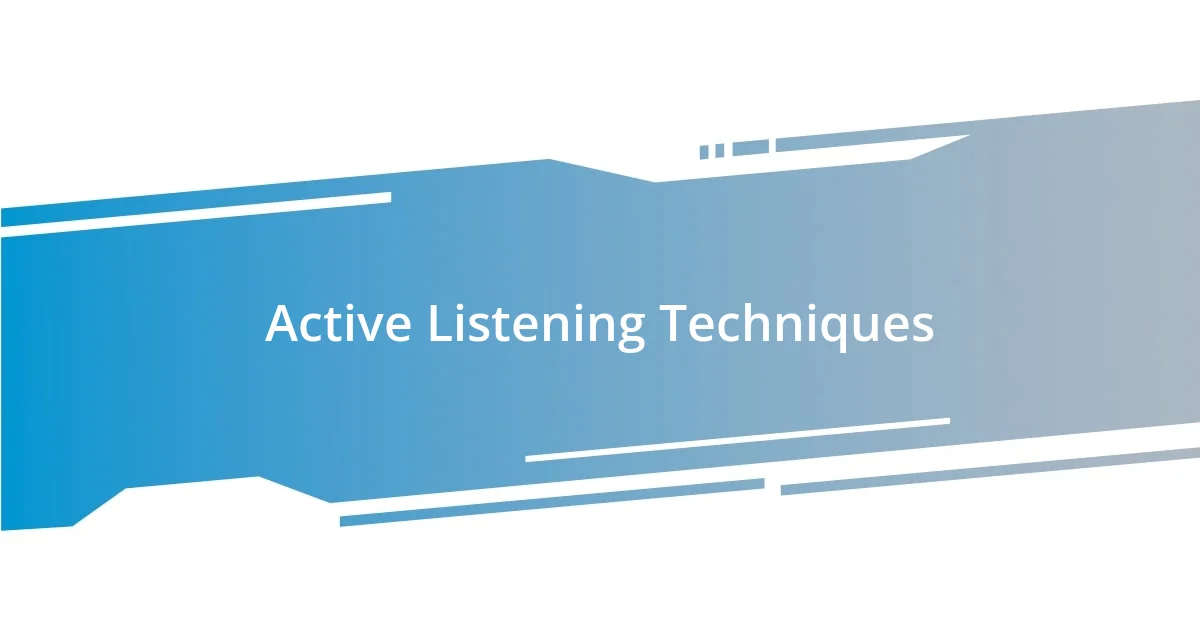Key takeaways:
- Effective communication relies on clear messaging, active listening, and understanding nonverbal cues to foster meaningful connections.
- Identifying and adapting your communication style based on the audience can enhance interactions and bridge gaps in understanding.
- Building rapport and trust through authenticity, active listening, and humor is crucial in navigating difficult conversations and engaging others genuinely.

Understanding Communication Fundamentals
Effective communication is built upon a few fundamental principles that are easy to overlook but crucial in establishing meaningful connections. For instance, I often think about a time I misinterpreted a friend’s text message; it was a simple oversight, but it led to unnecessary tension. Have you ever had a moment where a misunderstanding could have been avoided with clearer communication?
At the core of communication is the exchange of messages, both verbal and non-verbal. I remember standing in a room filled with colleagues, realizing that a lack of eye contact and fidgeting were creating barriers in our discussion, despite the words being spoken. It made me appreciate how body language and tone can sometimes resonate louder than the actual words we choose.
Listening is just as important, if not more so, than speaking in any conversation. I once attended a workshop that emphasized active listening techniques. I learned that by truly focusing on the speaker rather than planning my next statement, I was not only acknowledging their message but also enhancing my understanding. Doesn’t it feel rewarding to engage deeply with someone, making them feel heard and valued?

Identifying Your Communication Style
Identifying your unique communication style is a crucial step in enhancing your interactions. I recall an instance during a team meeting where my direct approach surprised a few colleagues. They seemed unprepared for my straightforward feedback, which made me realize that while honesty is essential, the delivery method plays a significant role in how my message is received. Have you ever noticed how your delivery alters others’ perceptions?
Understanding your style can help bridge gaps in communication. I often reflect on how different my discussions are with friends compared to professional settings. With friends, I’m more relaxed, often joking and using casual language, while with coworkers, I tend to be more formal and structured. This shift impacts not only my messaging but also the level of engagement I receive, showcasing the importance of tailoring your approach based on your audience.
To make it clearer, here’s a simple comparison of various communication styles:
| Communication Style | Characteristics |
|---|---|
| Assertive | Confident, clear, and respectful; balances needs of self and others. |
| Aggressive | Hostile or dominating; often disregards others’ feelings and needs. |
| Passive | Avoids expressing opinions or needs; often leads to misunderstanding. |
| Passive-Aggressive | Indirectly expresses anger; can create confusion in relationships. |

Active Listening Techniques
Active listening is a transformative technique that can significantly enhance any conversation. I vividly remember a time when a colleague shared their frustrations about a project. Instead of racing to respond with my ideas, I made a conscious effort to fully absorb what they were saying. It was eye-opening—by nodding and maintaining eye contact, I created a space where they felt comfortable expressing their thoughts without interruption. Isn’t it fascinating how much more we can connect when we genuinely listen?
Here are some effective active listening techniques I’ve found invaluable:
- Echoing: Repeat back what the speaker has said in your own words, demonstrating that you truly understand their message.
- Asking Clarifying Questions: If something is unclear, don’t hesitate to ask for more details. This shows you care about getting it right.
- Minimizing Distractions: Put away your phone and focus fully on the speaker. I learned that even the slightest distraction can disrupt the flow of communication.
- Verbal Affirmations: Use phrases like “I see” or “That makes sense” to encourage the speaker and validate their experience.
- Summarizing: At the end of the conversation, summarize key points to ensure mutual understanding and reinforce the key messages shared.
Incorporating these techniques into your daily interactions can substantially improve the depth and quality of your conversations. When people know they’re being heard, it cultivates trust and openness—a vital component of meaningful communication.

Nonverbal Communication Skills
Nonverbal communication is often the unsung hero of our interactions. I remember a time when I attended a networking event and noticed how my body language shifted as I spoke with different people. Some gestures, like crossing my arms, seemed to create walls, making it harder to connect, while moments of open posture instantly invited conversation. Isn’t it amazing how our bodies can convey messages even before we utter a word?
Facial expressions are another crucial component that I always try to be mindful of. Once, during a presentation, I caught myself frowning unintentionally while discussing a challenging topic. Afterward, a colleague approached me and mentioned that my expression might have conveyed negativity, despite my positive intentions. This feedback highlighted to me how easily our expressions can send mixed signals to our audience.
Moreover, the subtleties of nonverbal cues extend to things like eye contact and personal space. I learned this the hard way during a pivotal meeting when I inadvertently stood too close to a client. Their uncomfortable stance told me everything—I had invaded their personal space. Now, I’m acutely aware of reading those cues. Have you ever felt that your proximity to someone altered the vibe of the conversation? It’s incredible how such small adjustments can foster a sense of comfort and openness in our exchanges.

Techniques for Clear Messaging
One of the most valuable techniques for clear messaging is simplifying your language. I remember delivering a complex idea in a team meeting, only to see a sea of confused faces staring back at me. It hit me then—using jargon isn’t always impressive; it can alienate your audience. By breaking down my message into straightforward language, I found that not only did everyone understand, but engagement skyrocketed. Have you ever noticed how clarity immediately leads to more dynamic discussions?
Visual aids also play a significant role in enhancing understanding. During a project presentation, I decided to integrate some graphs and images alongside my spoken words. The transformation was palpable. Suddenly, people weren’t just hearing my points—they were visually connecting with them as well. It’s interesting how a simple chart can convey data far more effectively than words alone. Have you experienced a moment where a visual presentation made a complex concept click for you?
Lastly, adjusting your message to suit the audience can drastically improve clarity. When I transitioned from presenting to my peers to addressing a group of clients, I quickly realized the need to tailor my approach. With my colleagues, I could use industry-specific terms, but with clients, I focused on the benefits relevant to them. This shift not only enriched the conversation but also fostered a deeper connection. Ever thought about how a small tweak in your approach can lead to a more impactful exchange?

Navigating Difficult Conversations
Navigating difficult conversations requires a blend of empathy and clarity. I recall a challenging discussion with a team member who had not met expectations on a project. As I approached the topic, I chose my words carefully—acknowledging their efforts while addressing the issues directly. That moment taught me that balancing honesty with compassion can diffuse tension and open the door to productive dialogue. Have you ever faced a situation where someone was more receptive simply because you treated their feelings with respect?
Another key aspect is creating a safe space for both parties. I once had a heartfelt conversation with a friend who was struggling with a personal issue. Instead of jumping straight into advice, I asked open-ended questions and truly listened to their responses. This not only allowed them to share their feelings but also made it clear that I valued their perspective. It’s fascinating how the act of listening can completely transform the atmosphere of a tough conversation, don’t you think?
I’ve learned that preparation can be your best ally. Before discussing sensitive feedback with a colleague, I often jot down key points to ensure I stay focused and don’t veer into the emotional territory. For instance, during one performance review, I prepared specific examples and actionable solutions rather than making vague comments. This approach helped keep the discussion on track and constructive, reinforcing the idea that difficult conversations can lead to growth when handled thoughtfully. Have you ever felt more grounded simply by being prepared?

Building Rapport and Trust
Building rapport and trust is essential for effective communication, and I’ve found that authenticity plays a crucial role. I remember attending a networking event where everyone was exchanging business cards, but the conversations felt superficial. When I chose to share a personal challenge I had faced, suddenly, others opened up too. Have you ever noticed how vulnerability can be a powerful bridge in connecting with others?
Listening actively is another key aspect I cherish. I recall a moment during a team brainstorming session when I truly listened to a quieter colleague who had some innovative ideas. By encouraging their contribution and acknowledging their perspective, I didn’t just gain valuable insights; I also strengthened our relationship. Isn’t it amazing how simply paying attention can make someone feel seen and valued?
Humor often acts as a fantastic icebreaker in building trust. I vividly remember a tense meeting that shifted when I made a light-hearted remark about my own mistakes. The room lightened instantly; people smiled and began to share their own experiences. It struck me then—being relatable through humor can create an environment where everyone feels comfortable engaging. Have you found that laughter has a way of dissolving barriers in conversation?
















